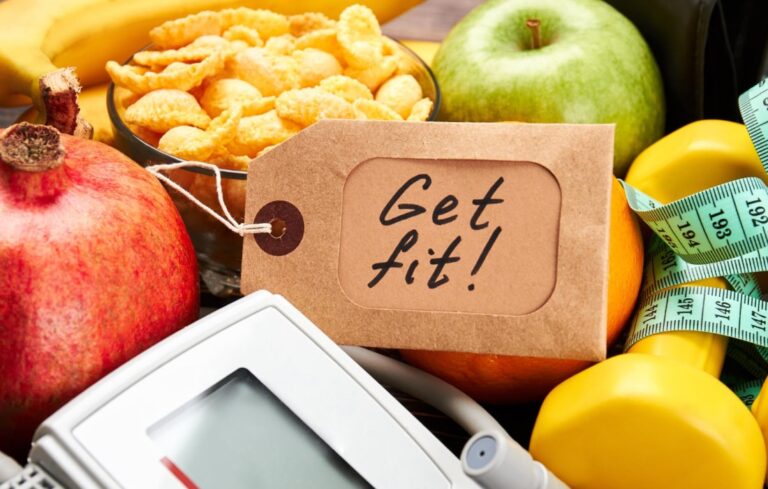Healthy Meals for a Fit Life: A Medical Perspective.
1. Introduction 
In the 21st century, non‑communicable diseases like obesity, type 2 diabetes mellitus (T2DM), cardiovascular disease (CVD), and certain cancers remain leading causes of morbidity and mortality worldwide. A growing body of research demonstrates that diet quality is a modifiable risk factor that can dramatically influence health trajectories.
Yet, “healthy eating” is often reduced to fad diets, quick fixes, or social‑media trends. As physicians, dietitians, and public‑health professionals emphasize, sustainable, balanced meals—rather than restrictive regimens—form the cornerstone of a fit life.
This article examines the medical science behind healthy meal composition, offering actionable insights and sample meal ideas suitable for daily living.
2. The Medical Imperative of Balanced Nutrition 
A fit life is not solely defined by vigorous exercise; it is inseparable from nutritional adequacy. Multiple longitudinal cohort studies (e.g., the Nurses’ Health Study and EPIC) link high‑quality diets—rich in whole grains, produce, lean proteins, and unsaturated fats—to lower all‑cause mortality. Conversely, diets high in ultra‑processed foods correlate with increased cardiometabolic risk.
Balanced nutrition achieves the following physiological goals:
-
Energy homeostasis through stable blood‑glucose levels
-
Maintenance of lean body mass via adequate protein intake
-
Anti‑inflammatory effects via omega‑3 fatty acids and phytonutrients
-
Micronutrient sufficiency for immune competence and metabolic regulation
3. Macronutrients: Getting the Balance Right 
| Macronutrient | Recommended Range | Medical Rationale |
|---|---|---|
| Carbohydrates | 45–55% of total calories | Supports central nervous system glucose needs; fiber improves gut microbiota and reduces LDL-C |
| Proteins | 1.2–1.6 g/kg body weight | Preserves muscle mass, supports satiety, aids recovery |
| Fats | 25–35% of total calories | Necessary for hormone synthesis, fat‑soluble vitamin absorption, and anti‑inflammatory eicosanoid production |
Key Tips:
-
Prioritize complex carbs (e.g., oats, quinoa) over refined grains.
-
Opt for complete proteins (eggs, soy, fish) or complementary plant proteins (beans + rice).
-
Choose fats from olive oil, avocado, nuts, and cold‑water fish while limiting trans fats.
4. Micronutrients: Small but Mighty 
Micronutrients (vitamins, minerals, and phytochemicals) act as co‑enzymes, antioxidants, and signaling molecules. Deficiencies—even subclinical—can impair performance and recovery.
-
Iron & B12: Prevent anemia; crucial for oxygen transport.
-
Vitamin D & Calcium: Support bone integrity; modulate immune responses.
-
Magnesium & Potassium: Regulate neuromuscular excitability and blood pressure.
-
Polyphenols (e.g., flavonoids in berries, catechins in green tea): Exhibit antioxidant and vasodilatory properties.
A colorful plate is a practical proxy for micronutrient diversity and remains an evidence‑backed rule of thumb.
5. The Science of Glycemic Load and Satiety 
Beyond macronutrient percentages, glycemic load (GL) and dietary fiber determine post‑prandial glucose excursions and subsequent hunger signals.
Lower‑GL meals:
-
Minimize insulin spikes, reducing adipogenesis and T2DM risk.
-
Enhance satiety via slower gastric emptying.
-
Lower systemic inflammation markers (hs‑CRP) in clinical trials.
Pairing carbs with protein, healthy fats, and fibrous vegetables blunts GL, sustaining energy levels throughout training or busy workdays.
6. Designing Healthy Meals: A Practical Framework 
The Medical Plate Method (adapted from the Harvard Healthy Plate) divides a 9‑inch plate as follows:
-
½ Non‑starchy vegetables + fruits (fiber, micronutrients)
-
¼ Lean protein (animal or plant)
-
¼ Whole‑grain carbohydrates or starchy vegetables
-
~1 tbsp healthy fats (olive oil drizzle, nut butter)
Smart Meal‑Prep Principles 
-
Batch cook proteins (e.g., grilled chicken, lentils) to reduce weekday decision fatigue.
-
Portion with a digital scale to align calories with specific fitness goals.
-
Season with herbs/spices rather than excess salt or sugar.
-
Hydration: Aim for ~35 mL/kg/day of water; adjust for climate and exercise.
7. Sample One‑Day Menu (~2,100 kcal) 
| Time | Meal | Key Components & Medical Benefits |
|---|---|---|
| 07:30 AM | Breakfast: Overnight oats with rolled oats, chia seeds, Greek yogurt, blueberries, and a teaspoon of flaxseed | Low‑GL carbs sustain morning energy. Omega‑3s reduce inflammation. |
| 10:30 AM | Snack: Apple slices with natural peanut butter | Fiber + MUFAs promote satiety & stable glucose. |
| 01:00 PM | Lunch: Mediterranean bowl: quinoa, mixed greens, cherry tomatoes, grilled salmon, olives, crumbled feta, and olive‑oil‑lemon dressing | High in omega‑3s and antioxidants; supports cardiovascular health. |
| 04:00 PM | Snack: Carrot sticks & hummus | Beta‑carotene supports vision; chickpeas add plant protein. |
| 07:30 PM | Dinner: Stir‑fried tofu & broccoli in garlic‑ginger sauce served over brown rice, topped with sesame seeds | Isoflavones in tofu provide cardioprotective effects. Sulforaphane in broccoli exhibits anti‑cancer properties. |
| 09:00 PM | Optional Recovery Shake: Whey or pea protein blended with unsweetened almond milk and frozen spinach | Supports muscle recovery for individuals training intensely. |
8. Special Considerations 
-
Athletes & High‑Performance Trainers: Protein timing (20–30 g within two hours post‑exercise) enhances muscle protein synthesis.
-
Older Adults (> 60 years): Raise protein to 1.5–1.8 g/kg to counter sarcopenia and ensure adequate vitamin D and calcium for bone preservation.
-
Individuals with Chronic Conditions:
-
Hypertension: Adopt DASH principles—limit sodium, emphasize potassium‑rich produce.
-
Type 2 Diabetes: Focus on 35–45% low‑GI carbohydrate distribution and consistent meal timing.
-
9. Common Pitfalls and How to Avoid Them 
| Pitfall | Medical Impact | Evidence‑Based Solution |
|---|---|---|
| Skipping breakfast | Elevated cortisol; overeating later | Opt for high‑protein breakfasts that stabilize glucose |
| Ultra‑processed “health” bars | Added sugars, endocrine disruptors | Replace with whole‑food snacks (nuts, fruit) |
| Liquid calories (sugar‑sweetened beverages) | Increased visceral fat & T2DM risk | Choose water, herbal teas, or infused water |
| Excessive restriction | Micronutrient deficiencies; disordered eating | Follow balanced, inclusive dietary patterns (e.g., Mediterranean) |
10. Evidence and Guidelines 
This article aligns with:
-
World Health Organization (WHO) 2025 Global Targets for NCD reduction.
-
Dietary Guidelines for Americans, 2025–2030 and comparable international guidelines.
-
American College of Sports Medicine (ACSM) protein recommendations for athletes.
-
European Society of Cardiology (ESC) 2023 nutrition consensus on CVD prevention.
Peer‑reviewed meta‑analyses (BMJ, Circulation) confirm that diets emphasizing whole foods, plant diversity, and healthy fats reduce all‑cause mortality by up to 30% compared to westernized patterns.
11. Conclusion 
Healthy meals are not about perfection or fleeting trends; they are about evidence‑based choices repeated consistently. By understanding macronutrient balance, prioritizing micronutrient‑rich foods, and tailoring meals to individual needs, anyone can support optimal body composition, metabolic health, and athletic performance.
Remember, a fit life begins at the table, one informed bite at a time!


















